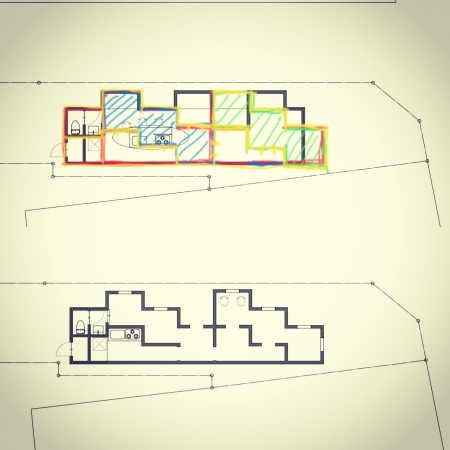ズレながら連続して
人が人と一緒に佇むことができる最小の大きさは二畳だと考えている。だから、二畳単位でプランを考ることがある。それで二畳単位で並べていたら、その中に連続する二畳単位の連なりが見えたので、それを手掛かりにプランを構築してみた。
小さな建築では空間を細分化することは無理があると感じていたが、ズレながら連続する配置にすれば、何か可能性が生まれるのではないかと思えた。
その可能性とは、佇める空間が流動的に連続して、それ自体が建築になれば、建築の大小に関係無く、プランが成立し、尚且つ、空間に様々な変化がもたらされて複雑さが出て、その複雑さは利用の仕方しだいで、建築と人のギャップを埋めてくれるようなことである。
"Continuously shifting"
We believe that the smallest size a person can stand with is a tatami mat. Therefore, we may consider the plan in units of two tatami mats. Then, when I arranged them in units of 2 tatami mats, I could see a series of consecutive 2 tatami mats in them, so I tried to build a plan with that as a clue.
I felt that it was impossible to subdivide the space in a small building, but I thought that there would be some possibility if they were arranged consecutively while shifting.
The possibility is that if the standing space is fluidly continuous and becomes an architecture itself, the plan will be established regardless of the size of the architecture, and various changes will be brought to the space. And complexity, depending on how it is used, is such that it bridges the gap between architecture and people.


